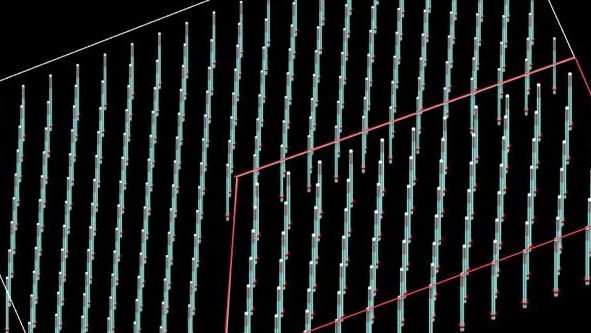September 2024 Issue Index
Optimal blast performance
Maptek BlastMCF revolutionises blast design for surface operations, generating scenarios that consider competing objectives while engineers retain fine control.
Balancing the interrelated factors to optimise competing blast objectives is an iterative and time consuming process for engineers to manipulate the levers for localised conditions using current blast design tools.
Fixed aspects like geology, bench height and drill setup as well as variable inputs like geometry, explosives and timing all influence blast outcomes.
It is therefore typical for engineers to fall back on tried and tested design parameters and use simulation models where they can consider a single objective in isolation, and apply incremental improvements from learnt experience.
Innovation
A new solution is here. Using the Maptek Compute Framework (MCF) to leverage cloud computational power for rapid, on-demand results is a game changer for drill and blast engineers to efficiently generate optimal designs. The framework is already deployed successfully for geological modelling in Maptek DomainMCF.
Acute global shortage of engineering talent will increase demand for integrated automation technology that allows operational tasks to be performed remotely. Drill and blast design is an ideal candidate, with twin goals of easing pressure on intensive engineering tasks and generating optimal blast outcomes.
Automation
Maptek BlastMCF automates the creation of optimised and detailed blast designs encompassing drill pattern, per hole charging and timing. It makes optimal blast design outcomes more accessible to every mine, and represents a step change away from manual design methods.
Engineers can now spend more time on scenario analysis and fine adjustment, which is especially important given the substantial nuance and complexity inherent in drill and blast.
Performing scenario analysis to objectively validate and verify design concepts will be welcomed by mine planners.
BlastMCF provides the mechanism to perform more scenario analysis in a fraction of the time of CAD-based design, with fine control of resulting designs before export to downstream applications.
Five design objective calculators are integrated with BlastMCF—cost, fly rock, powder factor, fragmentation and vibration—to measure the quality or fitness of each design generated. BlastMCF is configured to optimise competing objectives only after honouring the constraints. Where constraint thresholds are very tight, the design with the least violation is returned for review, allowing engineers to adjust the input design parameters.
BlastMCF requires only a polygon and surfaces to get started, together with user defined design bounds like min/max spacing. For targeting good fragmentation and low vibration objectives, hundreds to thousands of possible designs are generated, before converging on the most optimal. Engineers are presented with an array of 15 results for evaluation.
In this way, engineers can easily understand the trade-off in design parameters for every blast as they choose the optimal design. Integrated drill pattern editing tools are incorporated into BlastMCF for fine tune control, for example adding a double-stitched row.
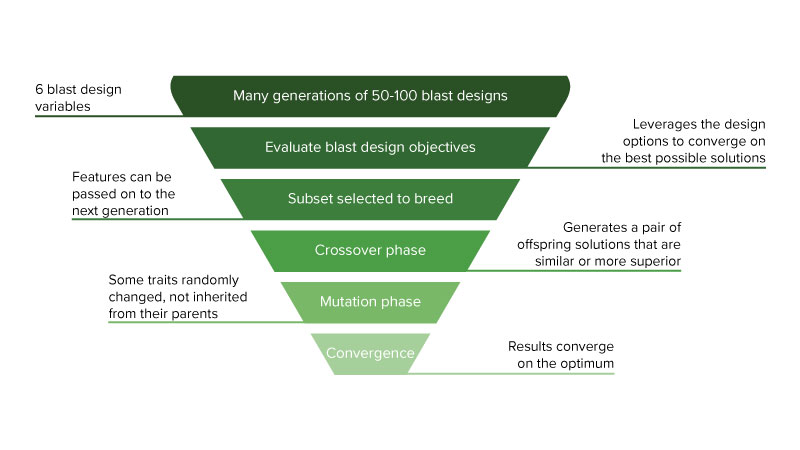
Integration
Blast designs are readily applied downstream through native integration with Maptek BlastLogic, whereby charge plans and timing designs can be refined before accurate execution on-bench. Export of designs to third-party systems is also supported.
A large iron ore mine tried a pre-release of BlastMCF for ease of use, speed to generate scenarios, and results, assessing it against day-to-day design and medium-term planning horizons. They found BlastMCF to be significantly more intuitive and easier to use than traditional CAD-based drill pattern tools. Optimal designs were achieved with fine tuning to remove, add or move holes in post processing.
According to Mark Roberts, Maptek Global Strategy Manager, BlastMCF is the first important step to orchestrate and automate blast design routines that incorporate measured outcomes.
Mines will be able to optimise the design to get closer to the desired outcome—low fly rock, good fragmentation, low vibration—based on what actually happens in production. Production and blast performance data will drive continual refinement of designs.
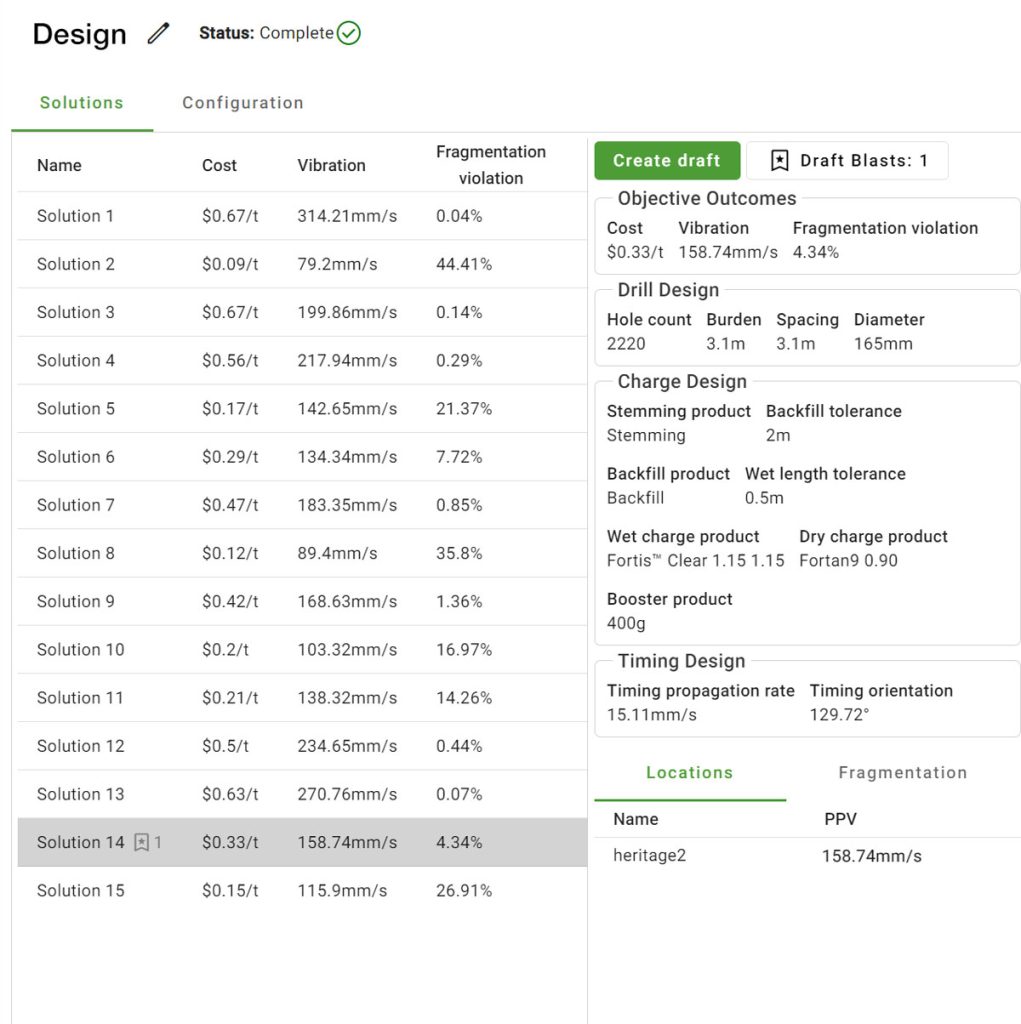
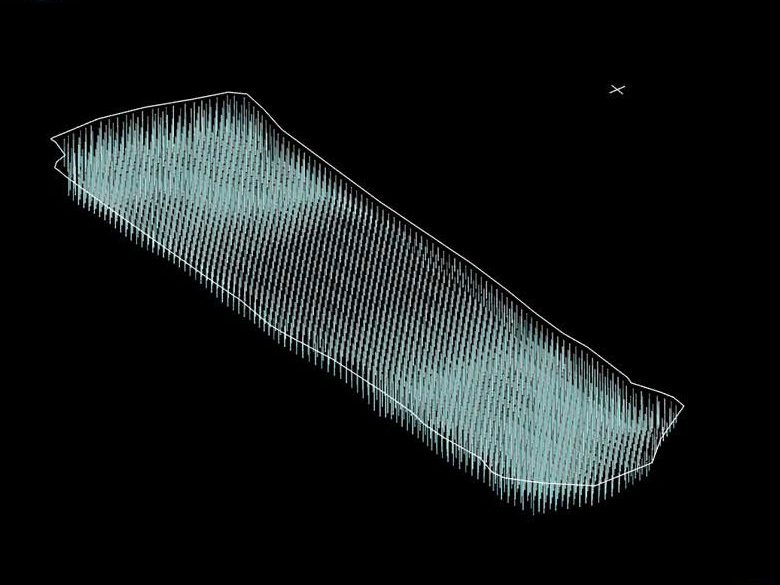
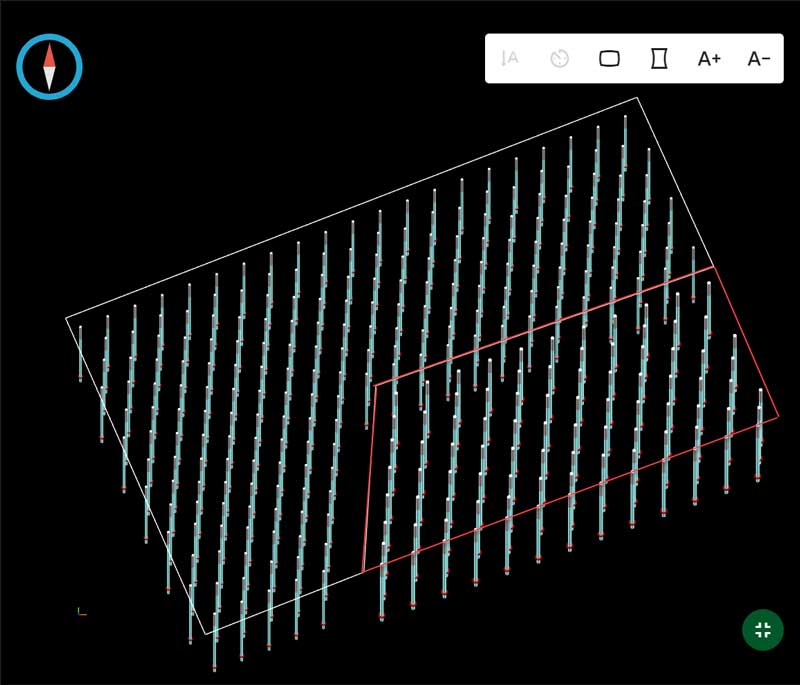
Process orchestration
The Maptek cloud ecosystem is another key step, centrally connecting up-to-date data formats and sources using Open API, and triggering computation and transformation on a set cadence.
‘Mines are investing heavily to measure key outputs across the mining value chain. By integrating these outputs with BlastMCF and our cloud ecosystem the future ability to orchestrate and automate blast design routines that optimise based on measured performance can be developed,’ Roberts said.
This approach is crucial for managing complex orebody knowledge or mine planning processes, and will deliver valuable insights that enable miners to make better decisions.
The Maptek BlastMCF web-based solution will be available soon, with native integration to BlastLogic Enterprise System on-premise, and BlastLogic Single Site Cloud Access.
Drill and blast engineers remain in control of the parameters and targeted outcomes
- Leveraging cloud computational power for rapid, on-demand results enables drill and blast engineers to efficiently generate optimal designs
- Engineers gain more time for analysing various scenarios and fine tuning designs to balance the complex interplay of processes inherent in drill and blast
- Crucial insights help miners manage orebody knowledge and mine planning, and deliver valuable support for decision making

